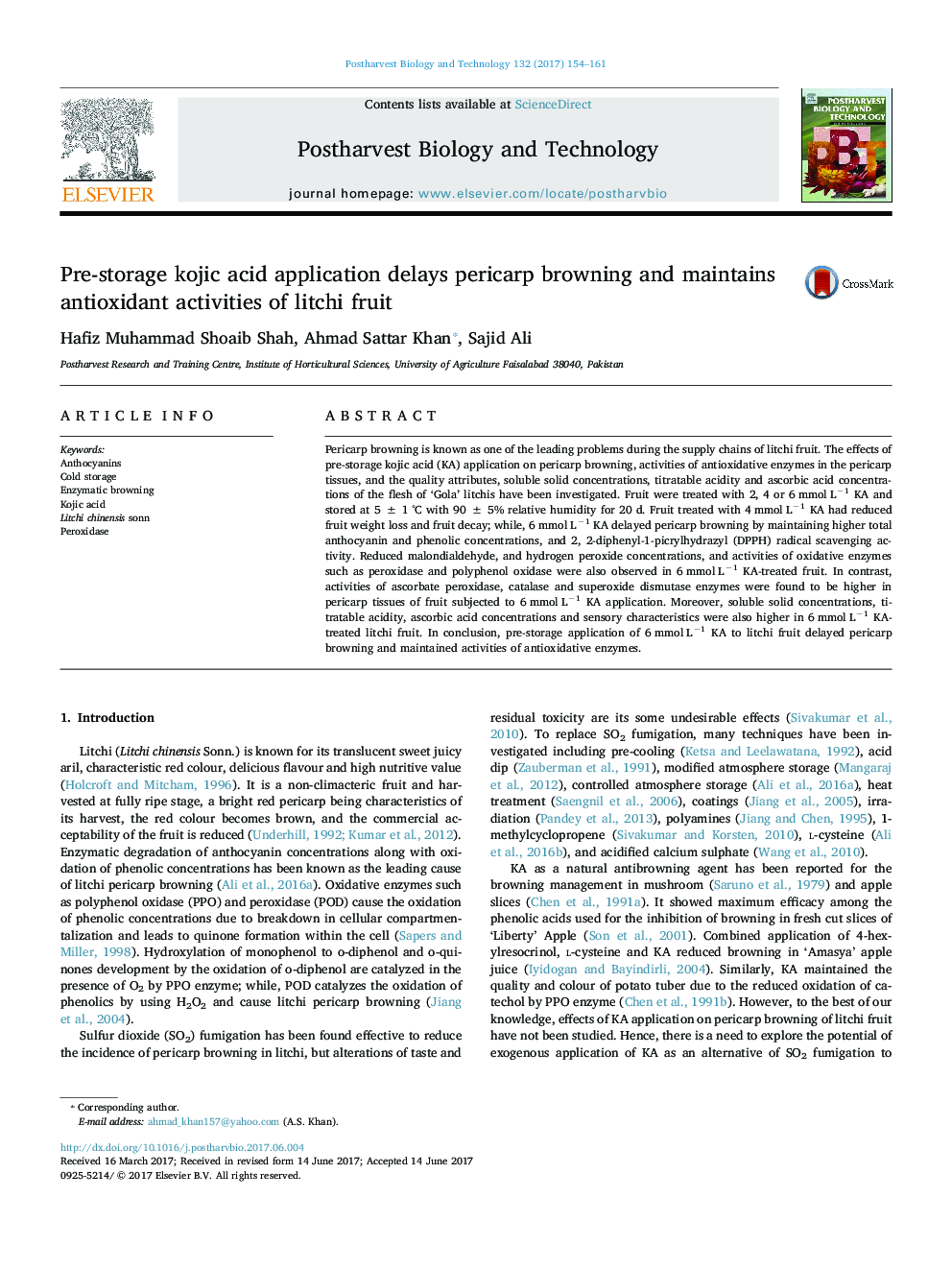| Article ID | Journal | Published Year | Pages | File Type |
|---|---|---|---|---|
| 5762681 | Postharvest Biology and Technology | 2017 | 8 Pages |
Abstract
Pericarp browning is known as one of the leading problems during the supply chains of litchi fruit. The effects of pre-storage kojic acid (KA) application on pericarp browning, activities of antioxidative enzymes in the pericarp tissues, and the quality attributes, soluble solid concentrations, titratable acidity and ascorbic acid concentrations of the flesh of 'Gola' litchis have been investigated. Fruit were treated with 2, 4 or 6 mmol Lâ1 KA and stored at 5 ± 1 °C with 90 ± 5% relative humidity for 20 d. Fruit treated with 4 mmol Lâ1 KA had reduced fruit weight loss and fruit decay; while, 6 mmol Lâ1 KA delayed pericarp browning by maintaining higher total anthocyanin and phenolic concentrations, and 2, 2-diphenyl-1-picrylhydrazyl (DPPH) radical scavenging activity. Reduced malondialdehyde, and hydrogen peroxide concentrations, and activities of oxidative enzymes such as peroxidase and polyphenol oxidase were also observed in 6 mmol Lâ1 KA-treated fruit. In contrast, activities of ascorbate peroxidase, catalase and superoxide dismutase enzymes were found to be higher in pericarp tissues of fruit subjected to 6 mmol Lâ1 KA application. Moreover, soluble solid concentrations, titratable acidity, ascorbic acid concentrations and sensory characteristics were also higher in 6 mmol Lâ1 KA-treated litchi fruit. In conclusion, pre-storage application of 6 mmol Lâ1 KA to litchi fruit delayed pericarp browning and maintained activities of antioxidative enzymes.
Related Topics
Life Sciences
Agricultural and Biological Sciences
Agronomy and Crop Science
Authors
Hafiz Muhammad Shoaib Shah, Ahmad Sattar Khan, Sajid Ali,
